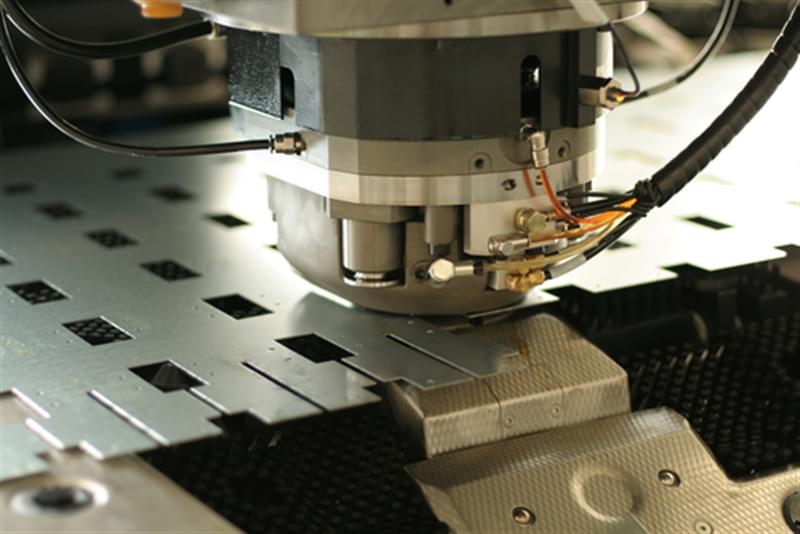Metal Stamping: Advanced Techniques for Getting Accuracy and Performance
Wiki Article
Advanced Techniques in Steel Stamping for Precision Manufacturing
In the realm of accuracy production, the advancement of metal marking strategies has been a pivotal pressure in attaining unequaled levels of accuracy and effectiveness. As industries consistently demand better resistances and intricate styles in their metal elements, the mission for sophisticated techniques in metal marking has intensified. From the use of innovative multi-stage marking processes to the combination of cutting-edge automation innovations, the landscape of steel marking is going through an extensive makeover. In this dynamic field, the merging of development and accuracy is reshaping the opportunities of what can be attained in metal construction.Advanced Multi-Stage Stamping Processes
Talking about the ins and outs of sophisticated multi-stage marking procedures discloses the advanced techniques utilized in modern production methods. Metal Stamping. Multi-stage stamping is a complex procedure that includes multiple actions to change a level sheet of steel right into a last stamped product. Making use of progressive dies, where different operations are performed at each phase of the marking procedure, enables for high precision and effectiveness in the manufacturing of complex steel componentsThroughout the preliminary stages of multi-stage stamping, the flat steel sheet is fed right into the marking press, where a collection of passes away are utilized to cut and shape the material. Subsequent stages entail added creating, flexing, and punching procedures to more improve the component. Each stage is thoroughly developed to build upon the previous one, bring about the production of intricate geometries with limited tolerances.
Advanced multi-stage marking procedures need a high level of knowledge and precision to make certain the top quality and consistency of the stamped parts. By making use of innovative equipment and tooling, producers can produce a wide array of metal components with effectiveness and accuracy.
Accuracy Tooling Innovations
Precision tooling innovations have actually changed the metal marking market, improving efficiency and top quality in manufacturing processes. CNC systems allow for intricate designs to be equated straight into tooling, ensuring precision and repeatability in the marking process.In addition, the assimilation of sensors and real-time monitoring abilities in precision tooling has allowed makers to identify and address issues immediately, minimizing downtime and reducing scrap rates. By incorporating smart technology right into tooling, drivers can optimize criteria such as pressure, rate, and placement throughout the marking procedure, causing improved product quality and raised performance.

Automation in Steel Stamping
The advancement of accuracy tooling advancements in the metal stamping sector has paved the way for substantial innovations in automation, changing the manufacturing landscape in the direction of increased efficiency and performance. Metal Stamping. Automation in steel stamping involves the use of innovative machinery and robotics to perform numerous tasks typically executed by human operators. This change towards automation offers numerous benefits, including improved precision, much faster manufacturing cycles, and lowered labor expensesOne key facet of automation in metal marking is the application of computer mathematical control (CNC) systems, which allow precise control over the marking procedure. CNC innovation allows for the production of complicated and intricate steel parts with regular high quality. Additionally, automated systems can be set to run constantly, leading to greater output prices and shorter lead times.
Additionally, automation enhances work environment safety by minimizing manual handling of heavy products and lessening the risk of mishaps (Metal Stamping). As making industries remain to welcome automation, the future of steel stamping holds fantastic assurance for even higher performance and advancement
High-Speed Stamping Techniques

One of the primary advantages of high-speed stamping methods her response is the capability to create a large volume of parts in a shorter amount of time compared to conventional stamping methods. This raised productivity not just permits manufacturers to fulfill limited manufacturing target dates but also enables cost savings through economies of scale. In addition, high-speed marking can help in reducing material waste by enhancing the material usage throughout the marking process.
Additionally, high-speed marking strategies often integrate innovative functions such as fast die adjustment systems and real-time tracking abilities, further improving the overall efficiency and adaptability of the steel marking procedure. As technology continues to development, high-speed More Help stamping is anticipated to play an essential function in driving the future of accuracy manufacturing.
Quality Assurance in Stamping Operations
Effective top quality control steps are vital for guaranteeing the dependability and consistency of steel stamping procedures. Quality control in stamping procedures involves a collection of methodical procedures targeted at spotting and preventing flaws in the manufactured parts. One vital aspect of top quality control in metal marking is making use of innovative evaluation strategies such as optical evaluation systems and coordinate gauging devices (CMMs) to validate the dimensions and resistances of stamped components.Furthermore, top quality control procedures in marking operations commonly include the application of analytical process control (copyright) techniques to check the production procedure in real-time and make certain that it remains within appropriate restrictions. By analyzing data and recognizing trends, producers can proactively attend to any type of inconsistencies from the wanted top quality standards.
Furthermore, quality assurance in metal stamping operations likewise involves complete product testing to guarantee that the raw materials used meet the needed requirements for the marking procedure. This might consist of carrying out product hardness tests, tensile stamina examinations, and dimensional evaluations to ensure the high quality and honesty of the stamped parts. Overall, implementing robust quality control steps is important for accomplishing high-quality stamped components continually.
Verdict
In conclusion, progressed strategies in steel marking play an important function in precision manufacturing processes. Via multi-stage marking processes, innovative tooling services, automation, high-speed techniques, and rigorous quality assurance actions, makers can accomplish greater degrees of accuracy and efficiency in their procedures. These innovations in metal stamping modern technology have enabled firms to generate complicated get rid of limited resistances, ultimately resulting in enhanced item top quality and client complete satisfaction in the manufacturing sector.Report this wiki page